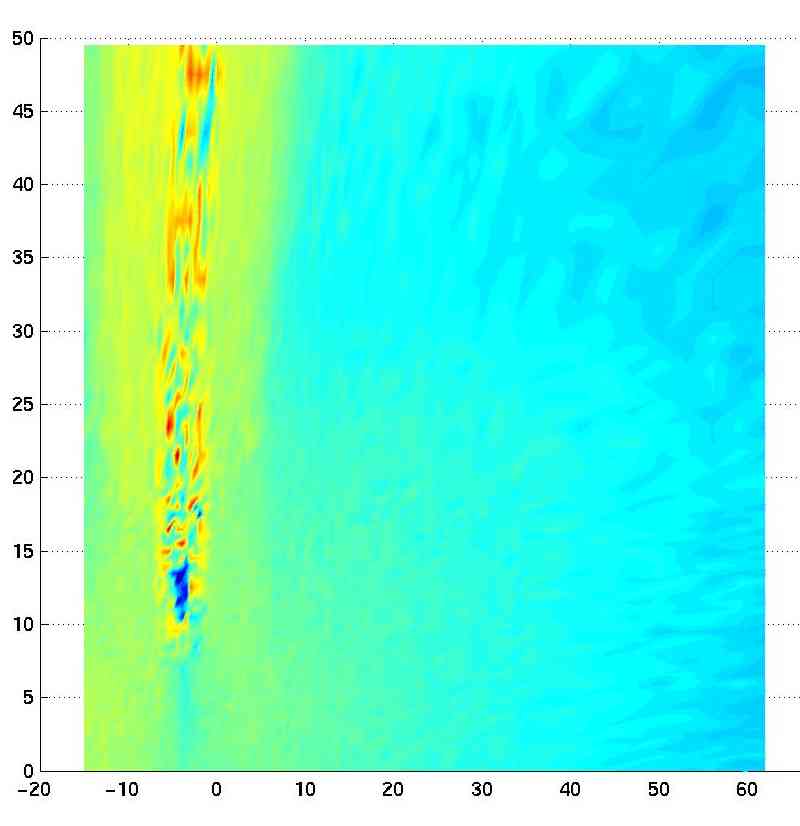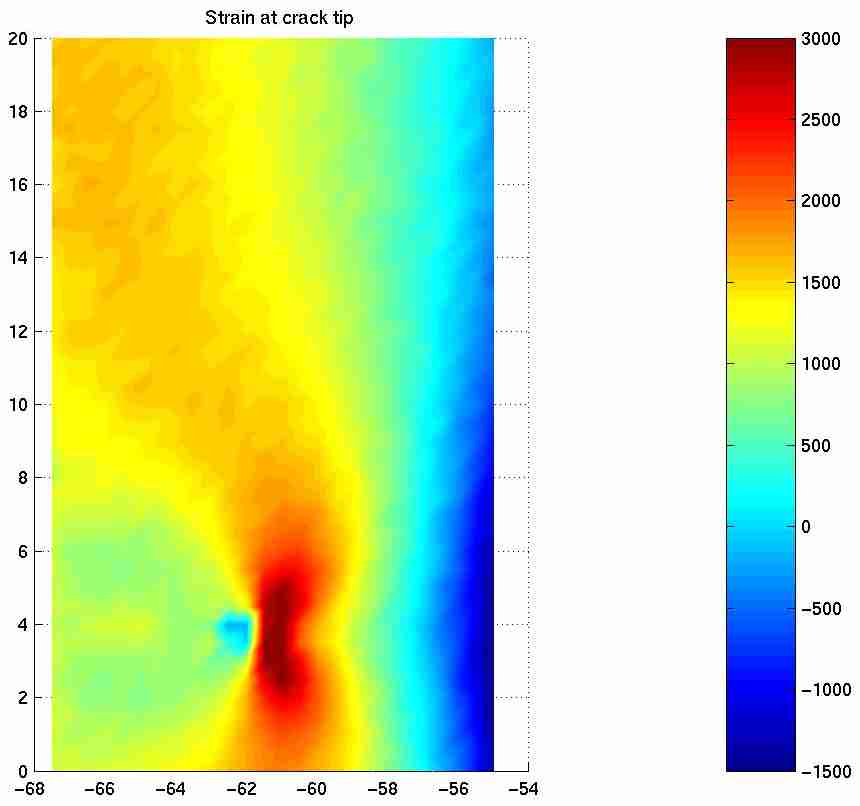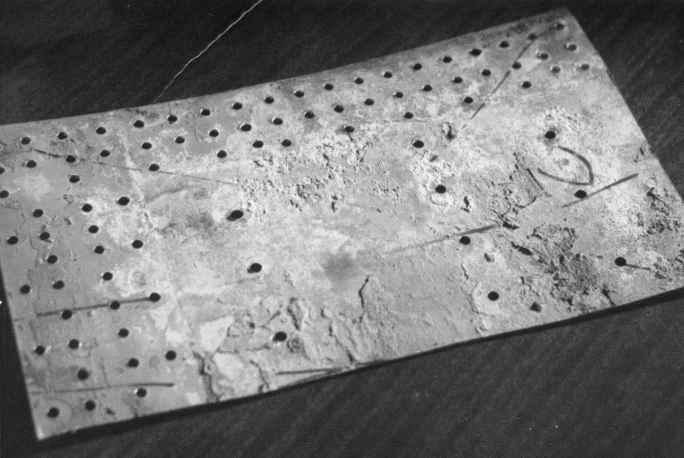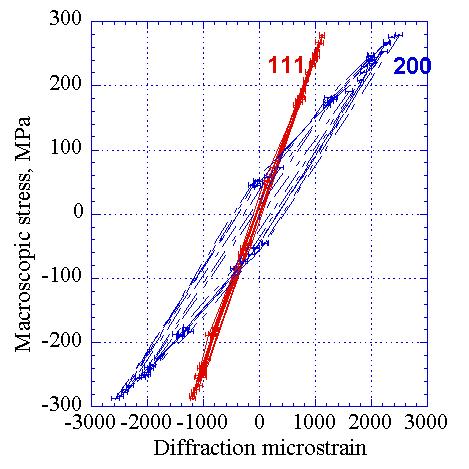Diffraction Research in Engineering and Advanced
Materials
- Ros BERRINGTON - Optimisation of Flange Design
Methodology
- Adnan MALIK - Multi-pixel detectors for neutron and X-ray diffraction
- Jonathan BELNOUE - Crack propagation in Ni-superalloy plates and shells
- Xu SONG - Polycrystalline deformation and fatigue
- Tes-Sung (Terry) JUN - Residual stresses in welding and joining
- Felix HOFMANN - Dislocation dynamics and X-ray diffraction
- Brian ABBEY - Synchrotron X-ray diffraction and structural integrity
Former members
- Daniele DINI -Fatigue Liging of Combustor Liners
- Gabriel REGINO - Residual stresses around inertia welds
- Kyungmok KIM - Surface coating and surface modification for
improved fretting fatigue resistance
- Shu Yan ZHANG - Energy dispersive diffraction analysis of
deformation of HCP materials
- Willem VORSTER - Quench-spray processing
- David LATHAM - Fatigue lifing of machined combustor
casings
- Sai LAKSHMI - 3D Optical analysis of deformation
- Saravanan KARUPPANAN - Modelling fretting fatigue
Diffraction research group is part of Solid
Mechanics and Materials Engineering
at the Department
of Engineering Science, University of
Oxford:
Current Research Projects include:
High Engergy X-ray (HEX)
Diffraction
Synchrotron particle acceleration is an
excellent way to produce some high energy X-rays.
The basics of synchrotron light generation
are explained in Alexander's
short note on the subject.
We use synchrotron beamlines at the SRS
Daresbury Laboratory and the European
Synchrotron Radiation Facility, ESRF, in Grenoble.
Examples of detailed experimental strain
mapping are shown in the figures below: (a) a region near the end of a
TIG weld pass in an Al alloy plate, and (b) strain intensification around
a crack traversing a four-point bent bar.
(a)  (b)
(b) 
(AM Korsunsky et al. @ ESRF)
Laboratory surface X-ray
Diffraction

Laboratory X-ray diffraction is an important
tool for phase, texture and stress characterisation in a variety of practically
important situations. The photograph shows one of the panels from the fuselage
of Russian Tupolev-154 civil aircraft, which were removed during refurbishment
after 11, 15 and 20 years of service. We considered the degradation of
strength due to a combination of corrosion and fatigue in a study which
drew on unique data obtained from coupons. Along with electrochemical properties,
residual stresses, peak broadening and polar density variation of different
reflections were considered as a function of depth, number of flights,
and time of service. A new view was developed of the chemical/structural
interactions during combined corrosion and fatigue.
Neutron Diffraction

(AM Korsunsky et al @ ISIS, RAL)
The combination of highly penetrating white
neutron beam and the servohydraulic INSTRON loading rig on ENGIN allowed
us to carry out in situ fully reversed fatigue cycling experiments. Our
aim was to inivestigate the difference in the cyclic response of differently
oriented groups of grains. The figure clearly demonstrates the importance
of such insight for design against failure: while the 111 trace is given
by a virtually straight line, the 200 shows significant deviation from
linearity, caused by large plastic strain experienced by these grains.
Selected publications:
-
Korsunsky A.M., Salimon A.I., Pape I., Polyakov
A.M., Fitch A.N. The thermal expansion coefficient of mechanically alloyed
Al-Cu-Fe quasicrystalline powders, Scripta Mater., v. 44, p. 217–222, 2001.

-
Salimon A.I., Korsunsky A.M., Kaloshkin S.D.,
Tcherdyntsev V.V., Shelekhov E.V., Sviridova T.A., The evolution of crystalline
precursors during the formation of Al-Cu-Fe quasicrystalline intermetallics
in mechanically alloyed powders, presented at ISMANAM2000, Oxford; to appear
in the J. Non-Cryst. Solids.

-
Korsunsky A.M., Daymond M.R. and Wells K.E.,
The Development of Strain Anisotropy during Plastic Deformation of an Aluminium
Polycrystal, Materials Science Forum v. 347-349, p. 492-497, 2000.

-
Korsunsky A.M., Wells K.E. and Shaw B.A.,
A Comparative Study of Diffraction Methods for Strain Measurement in a
Particulate MMC, Materials Science Forum v. 347-349, p. 504-509, 2000.
-
Salimon A.I., Korsunsky A.M., Shelekhov E.V.,
Sviridova T.A., Preparation and Analysis of Quasicrystalline Phases by
High Energy Ball Milling and X-Ray Diffraction. Materials Science Forum
v. 321-324, p. 676-681, 2000.
-
Korsunsky A.M., Wells K.E., High Energy Synchrotron
X-Ray Measurements of 2D Residual Stress States in Metal Matrix Composites.
Materials Science Forum v. 321-324, p. 218-223, 2000.
-
Salimon AI, Korsunsky AM, Ivanov AN, The character
of dislocation structure evolution in nanocrystalline FCCNi-Co alloys prepared
by high-energy mechanical milling, MATERIALS SCIENCE AND ENGINEERING A-STRUCTURAL
MATERIALS PROPERTIES MICROSTRUCTURE AND PROCESSING, v.271,p.196-205, 1999.

-
Wells K.E., Korsunsky A.M., Strain analysis
in composites using synchrotron X-ray diffraction, EXPERIMENTAL MECHANICS,
VOLS 1 AND 2, 1998, Ch. 219, pp.761-766 ADVANCES IN DESIGN, TESTING AND
ANALYSIS.
-
Korsunsky A.M., Wells K.E, Withers P.J., Mapping
two-dimensional state of strain using synchroton X-ray diffraction, SCRIPTA
MATERIALIA, 1998, Vol.39, No.12, pp.1705-1712.

-
Korsunsky A.M. and Withers P.J., Investigation
of residual stress induced crack closure and its effects on fatigue in
metal matrix composites, Key Engineering Materials, vols. 127-131, p. 1183-1190,
1997.

-
Korsunsky A.M., Residual stress evolution
in a metal matrix composite subjected to plastic bending, in T. Ericsson,
Ed., Proc. 5th Intl. Conf. on Residual Stresses (ICRS-5), Linkoping, Sweden,
16-18 June, 1997.
-
Watts M.R., Withers P.J., Korsunsky A.M. and
Fitzpatrick M.E., X-ray and neutron diffraction measurement of micro and
macrostresses in metal matrix composites, in Proc. ECRS4, Cluny-en-Bourgogne,
May 1996.
-
Korsunsky A.M., Fitzpatrick M.E., and Withers
P.J., Neutron diffraction measurement and modelling of stresses around
fatigue cracks in Al/SiC composites, in Proceedings of the Tenth Intl.
Conf. on Composite Materials (ICCM-10), A.Poursartip and K.Street, eds.,
Whistler B.C., Canada, 14-18 August, 1995, vol.1, pp.545-552.
You can download a pdf copy of references
showing the pdf logo  .
.
 This
page was last modified on 20 August 2008.
This
page was last modified on 20 August 2008.
 Return to AMK home page.
Return to AMK home page.
(b)